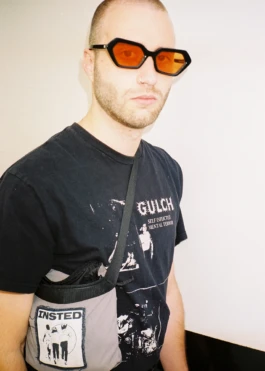

Iced Bruce Lee Please
I met Parker in downtown LA at the coffee shop 'No Ghost Bears' which seems like his kinda spot given all the cool cats out front. He ordered an Iced Bruce Lee (that’s sweetened condensed milk and four shots of espresso poured over ice) and I stuck with the usual cortado. Parker has a unique quality to his work, something beautiful and mystical, the combination of his subjects and print process becoming instantly recognizable. He’s also got great personal style and a slightly off-beat personality, in the best possible sense of course.
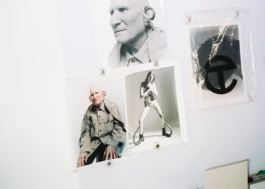
You’ve primarily lived on the West Coast, can you tell me a little about your experiences in Colorado, Portland and LA?
I lived in Colorado from ages 6-18 so I consider it my hometown. It formed a lot of my early ideas of culture and politics which I spent a lot of my early 20’s unlearning. San Diego was my next move but that doesn’t matter. I moved to Portland in 2015 and began working with two brothers who had a photo house/agency startup. It was my first time living in a walking city and I loved leaving my car in the same spot for months. After two years I felt my time there had run it’s course and I wanted to focus on making personal work. I moved to LA because I felt like I was too soft for New York and I didn’t know anyone in London. I’ve been in LA for 3 years this December and it’s been such a good experience. I feel like I’ve really come into my own here and have been fortunate enough to find ways to make the kind of work I wished I could during my final days in Portland.


“People know when they’re being sold to and it’s what separates art from content. Content can be artful but, it’s still there to remind you to 'eat mor chickin'.”
Who inspired you around that time?
I was really taken with Re-Edition magazine. From the imagery to the layouts—something clicked and I thought “oh, this is good.” The first issue was released at the beginning of the year and it became the target for my naive career trajectory. I’m also guilty of being equally enamored with Harley Weir’s story and blossoming career (as was everyone else) so it was a perfect storm. I’m pretty sure I included images from Re-Edition editorials in every single mood board I made that year haha. I still think Jo Barker has a fantastic eye, but my horizon’s are a bit wider now. It’s also worth mentioning that I was inspired by actor Christoph Waltz, not for his acting, but his story. I loved the idea of a “late bloomer.” The fact that his work went largely unnoticed until he reached his 50’s made me feel like I could take my time, develop a style and perspective of my own, and still get to where I wanted to be. To be fair, I like being an “emerging artist". I like to believe that having fewer eyes on your work allows you the freedom to experiment, take risks, and work through failure more quickly. If you hit your stride when you’re 20, and your work receives constant validation, there’s less incentive to grow as an artist. Why would you fix what’s not broken?
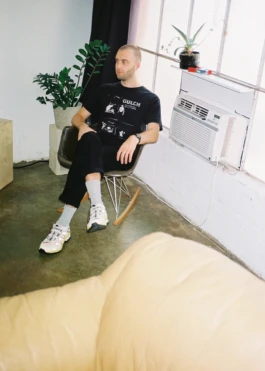
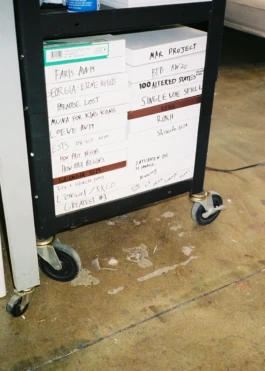
Can you explain your photographic process as I know it’s an integral part of your work?
I think what makes my process so integral is how it forces consideration. There are all these steps I take before I get to the final product and I don’t want to go through all of it for images or a subject matter I can’t stand behind. On the other hand, nothing takes the fun out of something for me quicker than knowing how it’s done—magic, sausages, you name it. A good image makes you forget you’re looking at a photograph.
Seems to me great quality and originality are achieved when things are slowed down and in smaller quantities. Would you say this is very apparent in your personal / editorial work vs commercial commissions? What’s the happy medium here?
That’s true. Historically, I’ve done my best work when I’ve had the most freedom. No impending deadlines or pesky fashion credits, just shooting what’s in front of me. Commercial jobs are a tricky beast in particular because the end result isn’t determined by its artistic merit, but instead by its ability to appeal to consumers and drive sales. You can have Avedon shoot flip flops, but you best believe it won’t be in the edit for Woman in the Mirror. People know when they’re being sold to and it’s what separates art from content. Content can be artful but, it’s still there to remind you to "eat mor chickin."
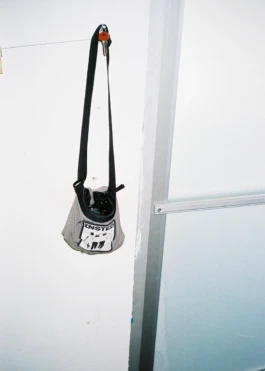

There is a quirkiness and humorous side to your personality which I love! Does that creep into your work sometimes?
It’s lurking around every corner, for better or for worse. I constantly have to reel my ideas back after jumping to the punniest possible interpretation. I think I’ve been doing a better job recently with subtly incorporating playfulness into my work. I’m very serious about my work, but not about making work that’s very serious.
At the same time there is a sincere desire to maintain the artistic integrity of your images. Does that just come naturally or become a challenge sometimes?
Again, for better or worse, I take my work seriously. Even when I first picked up a camera at 18 and took some truly terrible photos, I was still hurt when people told me they were terrible. I knew they weren’t good and I think that was the worst part. My standards move parallel to my accomplishments and I naturally think my work is never good enough. Sometimes it’s depressing, but most of the time it’s a strong motivator.
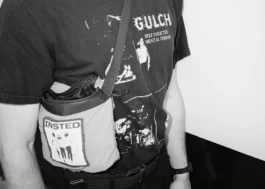
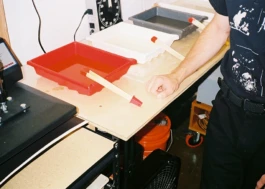
What ideas are swimming around in that head of yours in terms of personal work?
Man, I’ve been aching to embrace my kitschy side and make some work reminiscent of Hanns Reich’s compilation of imagery for the Laughing Camera series. Absolutely love the humor and pure coincidence in every image. Love that this question brings my love of puns full circle too. I’m not giving up.
Who would you most like to shoot a portrait series of?
My new friend Peter. He’s an art writer and critic and curated at the Riverside Museum of art for a number of years. I love hearing his opinions on contemporary trends, in both the pre and post Covid art world. He’s so knowledgeable on top of looking absolutely amazing.
Name an exhibition that has blown your mind?
Nobuyoshi Araki’s exhibition of Sentimental Journey. I saw it in person for the first time in Tokyo in 2017 or 2018. A photograph hadn’t made me cry before and hasn’t since. Incredible body of work.
Can you tell me about the 5 images you’ve selected from your work?
I chose five photos of friends and family.
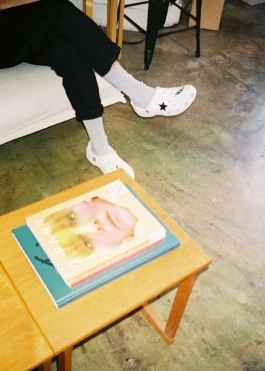
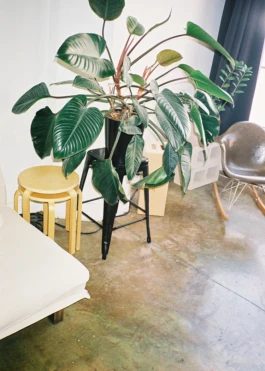
You have great personal style, who inspires you on that front?
Dang, thank you! I knew you had good taste when I saw you in your crocs. I’ve recently found myself dressing like a disgruntled camp counselor: short shorts, high grey socks with running shoes, and usually some shirt about stabbing Nazis. Old habits die hard, and I’m
a 17 year old punk at heart. I shop or thrift on a budget, mostly wear band tees, and run my clothes into the ground.
Top tips in LA?
Watch where you step.
What’s next?…
Another coffee.

Iced Bruce Lee Please

I met Parker in downtown LA at the coffee shop 'No Ghost Bears' which seems like his kinda spot given all the cool cats out front. He ordered an Iced Bruce Lee (that’s sweetened condensed milk and four shots of espresso poured over ice) and I stuck with the usual cortado. Parker has a unique quality to his work, something beautiful and mystical, the combination of his subjects and print process becoming instantly recognizable. He’s also got great personal style and a slightly off-beat personality, in the best possible sense of course.

You’ve primarily lived on the West Coast, can you tell me a little about your experiences in Colorado, Portland and LA?
I lived in Colorado from ages 6-18 so I consider it my hometown. It formed a lot of my early ideas of culture and politics which I spent a lot of my early 20’s unlearning. San Diego was my next move but that doesn’t matter. I moved to Portland in 2015 and began working with two brothers who had a photo house/agency startup. It was my first time living in a walking city and I loved leaving my car in the same spot for months. After two years I felt my time there had run it’s course and I wanted to focus on making personal work. I moved to LA because I felt like I was too soft for New York and I didn’t know anyone in London. I’ve been in LA for 3 years this December and it’s been such a good experience. I feel like I’ve really come into my own here and have been fortunate enough to find ways to make the kind of work I wished I could during my final days in Portland.


“People know when they’re being sold to and it’s what separates art from content. Content can be artful but, it’s still there to remind you to 'eat mor chickin'.”
Who inspired you around that time?
I was really taken with Re-Edition magazine. From the imagery to the layouts—something clicked and I thought “oh, this is good.” The first issue was released at the beginning of the year and it became the target for my naive career trajectory. I’m also guilty of being equally enamored with Harley Weir’s story and blossoming career (as was everyone else) so it was a perfect storm. I’m pretty sure I included images from Re-Edition editorials in every single mood board I made that year haha. I still think Jo Barker has a fantastic eye, but my horizon’s are a bit wider now. It’s also worth mentioning that I was inspired by actor Christoph Waltz, not for his acting, but his story. I loved the idea of a “late bloomer.” The fact that his work went largely unnoticed until he reached his 50’s made me feel like I could take my time, develop a style and perspective of my own, and still get to where I wanted to be. To be fair, I like being an “emerging artist". I like to believe that having fewer eyes on your work allows you the freedom to experiment, take risks, and work through failure more quickly. If you hit your stride when you’re 20, and your work receives constant validation, there’s less incentive to grow as an artist. Why would you fix what’s not broken?


Can you explain your photographic process as I know it’s an integral part of your work?
I think what makes my process so integral is how it forces consideration. There are all these steps I take before I get to the final product and I don’t want to go through all of it for images or a subject matter I can’t stand behind. On the other hand, nothing takes the fun out of something for me quicker than knowing how it’s done—magic, sausages, you name it. A good image makes you forget you’re looking at a photograph.
Seems to me great quality and originality are achieved when things are slowed down and in smaller quantities. Would you say this is very apparent in your personal / editorial work vs commercial commissions? What’s the happy medium here?
That’s true. Historically, I’ve done my best work when I’ve had the most freedom. No impending deadlines or pesky fashion credits, just shooting what’s in front of me. Commercial jobs are a tricky beast in particular because the end result isn’t determined by its artistic merit, but instead by its ability to appeal to consumers and drive sales. You can have Avedon shoot flip flops, but you best believe it won’t be in the edit for Woman in the Mirror. People know when they’re being sold to and it’s what separates art from content. Content can be artful but, it’s still there to remind you to "eat mor chickin."


There is a quirkiness and humorous side to your personality which I love! Does that creep into your work sometimes?
It’s lurking around every corner, for better or for worse. I constantly have to reel my ideas back after jumping to the punniest possible interpretation. I think I’ve been doing a better job recently with subtly incorporating playfulness into my work. I’m very serious about my work, but not about making work that’s very serious.
At the same time there is a sincere desire to maintain the artistic integrity of your images. Does that just come naturally or become a challenge sometimes?
Again, for better or worse, I take my work seriously. Even when I first picked up a camera at 18 and took some truly terrible photos, I was still hurt when people told me they were terrible. I knew they weren’t good and I think that was the worst part. My standards move parallel to my accomplishments and I naturally think my work is never good enough. Sometimes it’s depressing, but most of the time it’s a strong motivator.


What ideas are swimming around in that head of yours in terms of personal work?
Man, I’ve been aching to embrace my kitschy side and make some work reminiscent of Hanns Reich’s compilation of imagery for the Laughing Camera series. Absolutely love the humor and pure coincidence in every image. Love that this question brings my love of puns full circle too. I’m not giving up.
Who would you most like to shoot a portrait series of?
My new friend Peter. He’s an art writer and critic and curated at the Riverside Museum of art for a number of years. I love hearing his opinions on contemporary trends, in both the pre and post Covid art world. He’s so knowledgeable on top of looking absolutely amazing.
Name an exhibition that has blown your mind?
Nobuyoshi Araki’s exhibition of Sentimental Journey. I saw it in person for the first time in Tokyo in 2017 or 2018. A photograph hadn’t made me cry before and hasn’t since. Incredible body of work.
Can you tell me about the 5 images you’ve selected from your work?
I chose five photos of friends and family.


You have great personal style, who inspires you on that front?
Dang, thank you! I knew you had good taste when I saw you in your crocs. I’ve recently found myself dressing like a disgruntled camp counselor: short shorts, high grey socks with running shoes, and usually some shirt about stabbing Nazis. Old habits die hard, and I’m
a 17 year old punk at heart. I shop or thrift on a budget, mostly wear band tees, and run my clothes into the ground.
Top tips in LA?
Watch where you step.
What’s next?…
Another coffee.